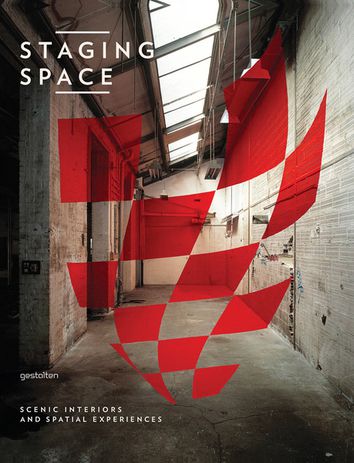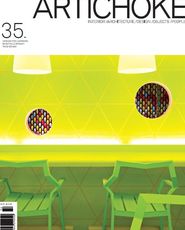At Germany’s Kunsthalle Düsseldorf art gallery, a cosy, homely kitchen sits humbly in one of the gallery’s corners. Fresh leeks, lettuces and pumpkins are stacked in a corner ready for use, loaves of sourdough and bread rolls rest beside a breadbin and a cook wipes down a counter top before continuing to prepare snacks for the reception of the exhibition.

Staging Space: Scenic Interiors and Spatial Experiences.
Before long, the cook leaves and the kitchen begins to rotate, unexpectedly, for the exhibition visitors. At 90° anti-clockwise, the kitchen appears to have been picked up and shaken around. The vegetables are now fumbled against a wall with pots, pans and rubbish bins. A string of garlic, which once hung from a hook on the wall, now dangles precariously from the “ceiling.” The kitchen continues its revolution. By the time it comes to a stop at an odd 45° angle, the kitchen’s contents have spilled onto the surrounding platform, smeared in an unidentifiable brown sludge – perhaps a foul mixture of boiling soup, coffee and sauces. Within a matter of minutes, the pristine kitchen now resembles a pile of junk at a tip. This toppled kitchen is just one of the examples featured in Staging Space and shows the communicative and atmospheric potential of spatial design.
Good spatial design is stimulating, explorative and overtly changes the user’s perspective. Featuring exhibitions, interiors and stage sets, this book demonstrates how spatial design is much more than dealing with a room’s height, depth and width, but about creating a visual identity that affects the user.
R. Klanten, L. Feireiss, Ed, Gestalten, 2010, 240 pp, $115.















